A body A weighting P1 descends down inclined plane D fixed of a wedge which makes an angle α with the horizontal, and pulls a load B that weights P2 by means of a weightless and inextensible thread passing over a fixed smooth pulley C, as shown in fig. 2E.11. Determine the horizontal compouent of the force (in Newton) which the wedge acts on the floor corner E.
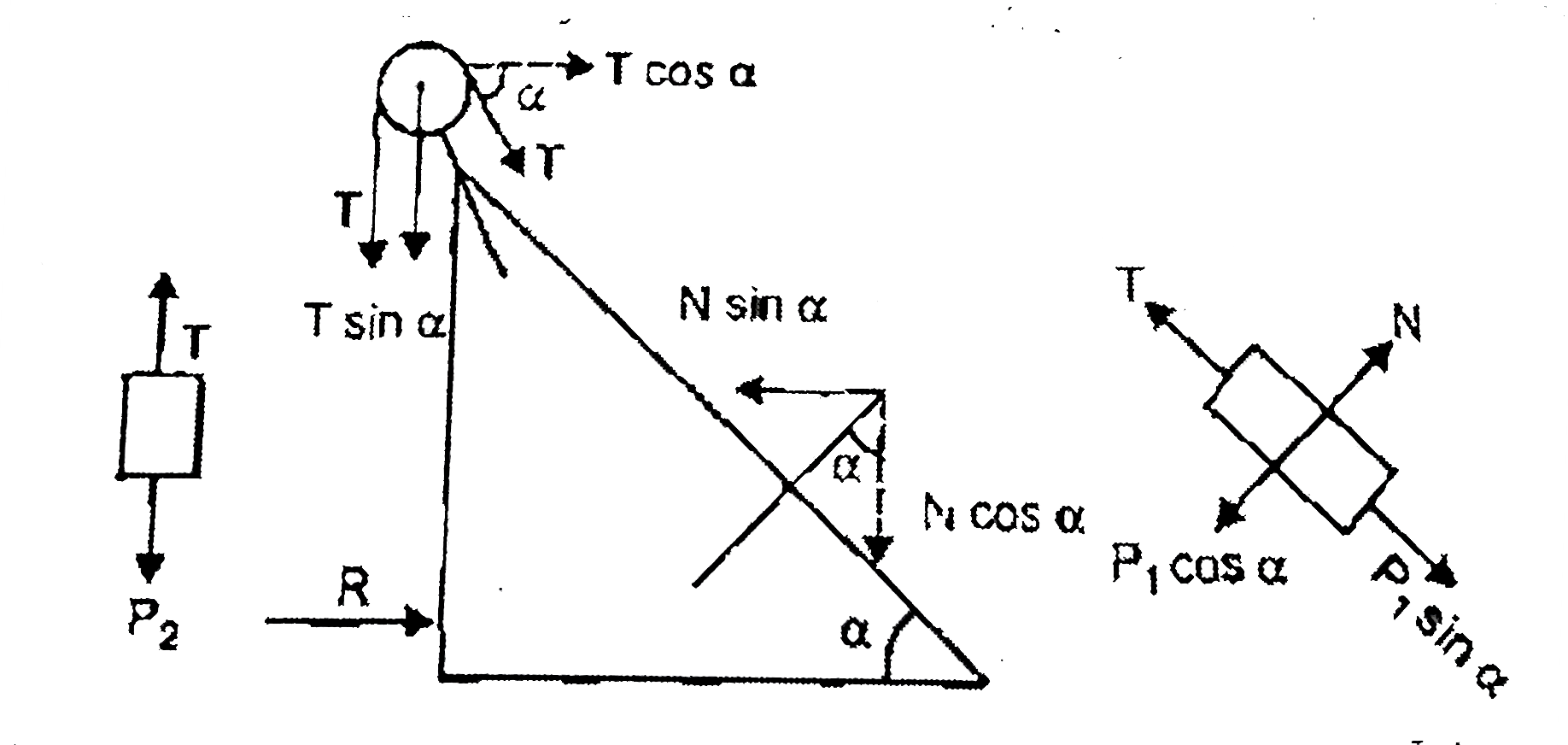
Step by step video & image solution for A body A weighting P_(1) descends down inclined plane D fixed of a wedge which makes an angle alpha with the horizontal, and pulls a load B that weights P_(2) by means of a weightless and inextensible thread passing over a fixed smooth pulley C, as shown in fig. 2E.11. Determine the horizontal compouent of the force (in Newton) which the wedge acts on the floor corner E. by Physics experts to help you in doubts & scoring excellent marks in Class 11 exams.
Topper's Solved these Questions
- BOOK - ANURAG MISHRACHAPTER - FORCE ANALYSISEXERCISE - level 1103videos
FORCE ANALYSIS
- BOOK - ANURAG MISHRACHAPTER - FORCE ANALYSISEXERCISE - Level-273videos
FORCE ANALYSIS
- BOOK - ANURAG MISHRACHAPTER - FORCE ANALYSISEXERCISE - Matching type13videos
FORCE ANALYSIS
- BOOK - ANURAG MISHRACHAPTER - DESCRIPTION OF MOTIONEXERCISE - Level-334videos
DESCRIPTION OF MOTION
- BOOK - ANURAG MISHRACHAPTER - IMPULSE AND MOMENTUMEXERCISE - matching3videos
IMPULSE AND MOMENTUM
Similar Questions
Block A of mass m and block B of mass 2m are placed on a fixed triangular wedge by means of a light and inextensible string and a frictionless pulley as shown in fig . The wedge is inclined at 45∘ to the horizontal on both sides . The coefficient of friction between the block Aand the wedge is 2/3 and that between the block B and the wedge is 1/3 .If the system of AandB is released from rest then find .
a. the acceleration of A
b. tension in the string
c.the magnitude and direction of the frictional force acting on A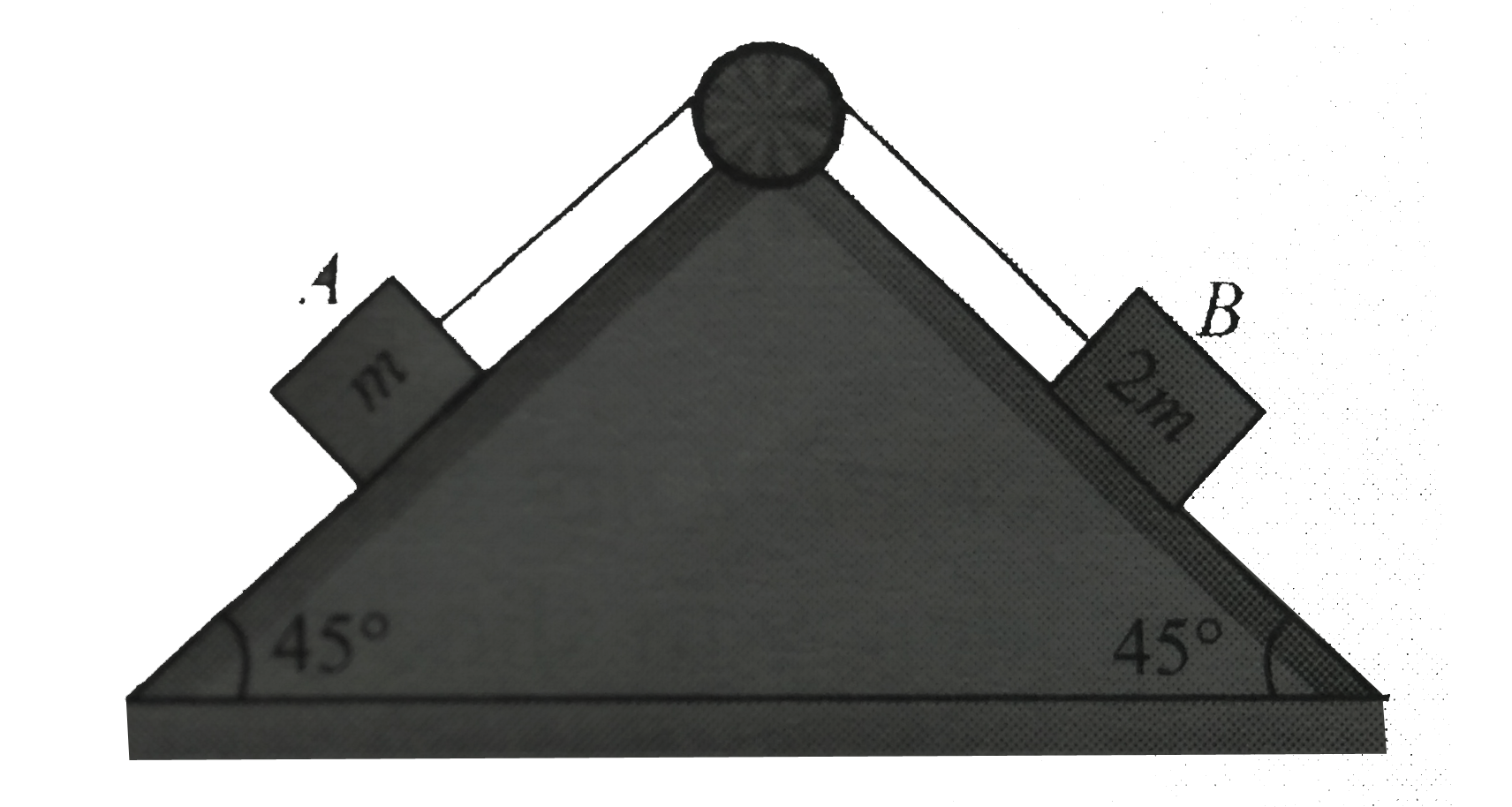 View Solution
View SolutionA small cubical block is placed on a triangular block M so that they touch each other along a smooth inclined contact plane as shown in fig. The inclined surface makes an angle θ with the horizontal. A force F is to be appled on the block m in horizontal direction so that the two bodies move without slipping against each other assuming the floor to be smooth also. determine the
(a) normal force with which m and M press against each other.
(b) magnitude of external force F. Express your answer in terms of m, M,θ,and g.
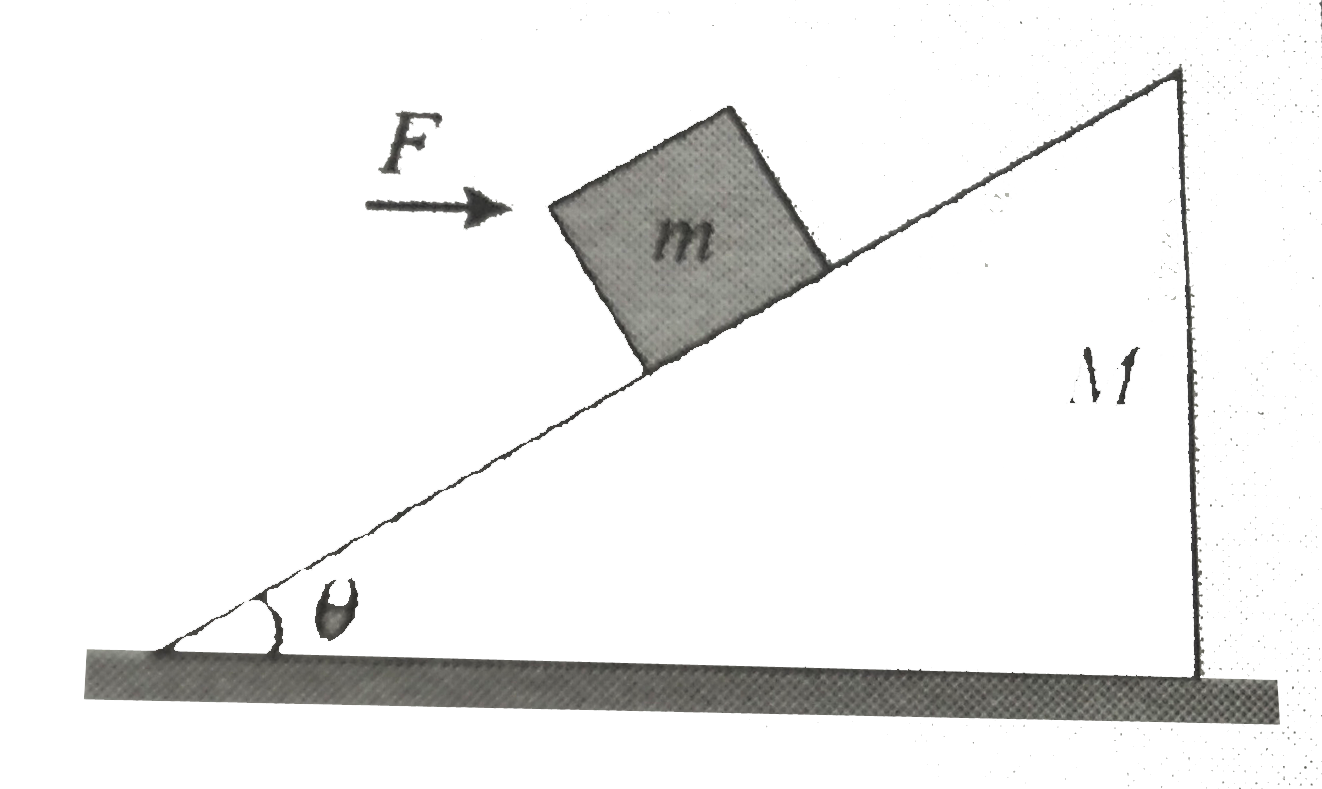 View Solution
View Solution
Knowledge Check
- Question 1 - Select One
A particle of weight W rests on a rough inclined plane which makes an angle α with the horizontal . If the coefficient of static friction μ=2tanα , find the horizontal force H acting transverse to the slope of the plane when the particle is about to slip :
 AW √3cosαBW√3sinαCWsinα√3DWcosα√3
AW √3cosαBW√3sinαCWsinα√3DWcosα√3 - Question 2 - Select One or More
A small block of mass of 0.1 kg lies on a fixed inclined plane PQ which makes an angle θ with the horizontal. A horizontal force of 1N acts on the block through its centre of mass as shown in figure.
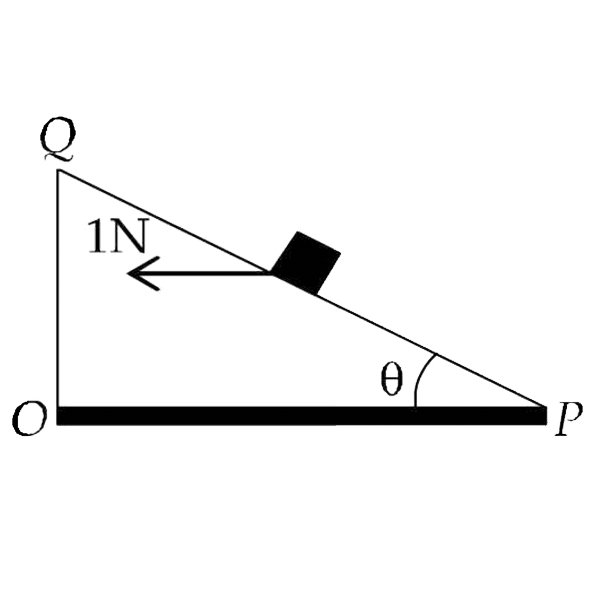
The block remains stationary if (take g=10m/s2)Aθ=45∘Bθ>45∘ and a frictional force acts on the block towards P.Cθ>45∘ and a frictional force acts on the block towards Q.Dθ<45∘ and a frictional force acts on the block towards Q. - Question 3 - Select One
A wedge of height 'h' is released from rest with a light particle P placed on it as shown. The wedge slides down an incline which makes an angle theta with the horizontal. All the surface are smooth, P will reach the surface of the incline in time:
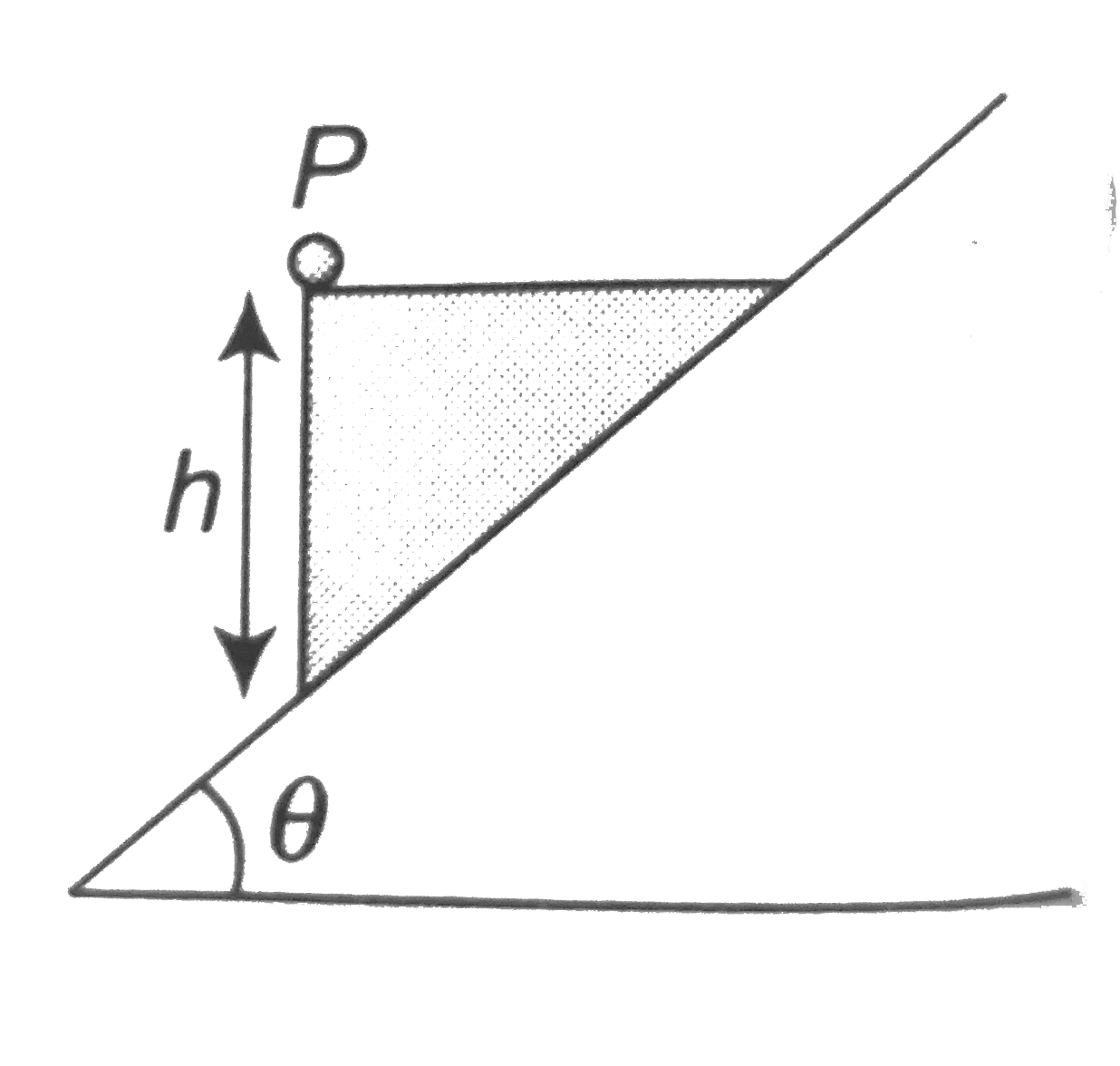 A√2hgsin2θB√2hgsinθcosθC√2hgtanθD√2hgcos2θ
A√2hgsin2θB√2hgsinθcosθC√2hgtanθD√2hgcos2θ
Block A of mass m and block B of mass 2m are placed on a fixed traingular wedge by means of a massless inextensible string and a frictionless pulley as shown in figure The wedge is inclined at 45∘to the horizontal on both sides .The coefficient of friction between blocks A and the wedge is 2/3 and that between block B and is released from rest find the following
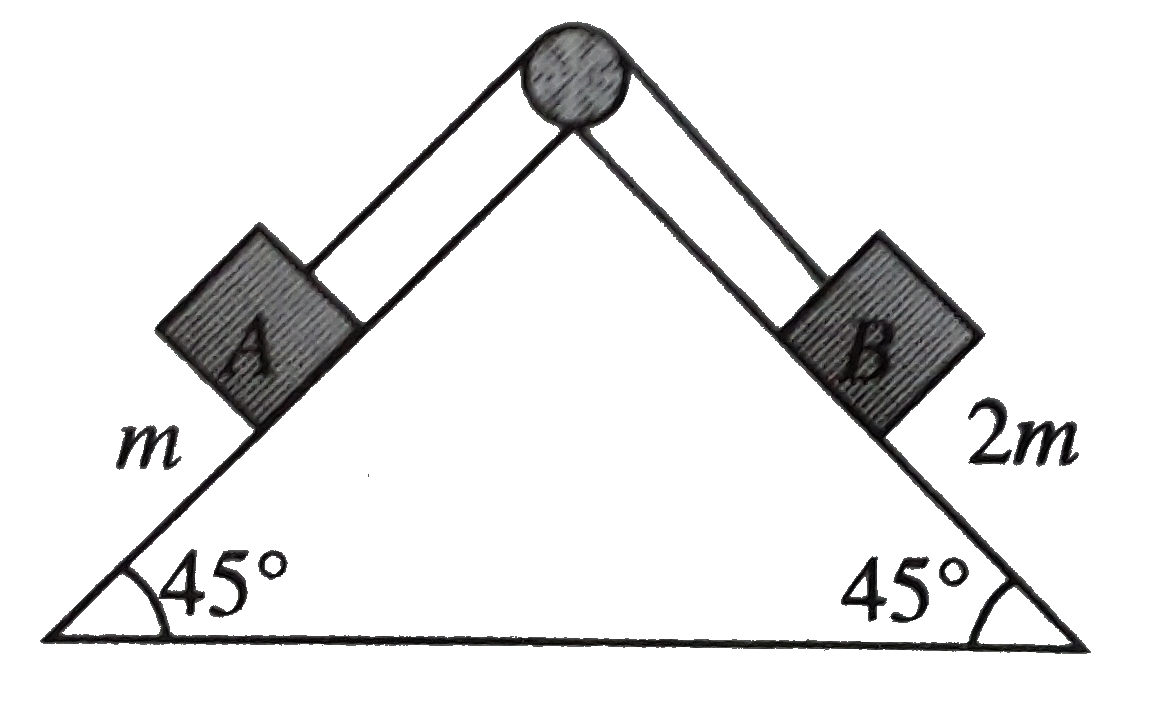
The magnitude and direction of the force of friction acting on A areView SolutionBlock A of mass m and block B of mass 2m are placed on a fixed triangular wedge by means of a light and inextensible string and a frictionless pulley as shown in fig . The wedge is inclined at 45∘ to the horizontal on both sides . The coefficient of friction between the block Aand the wedge is 2/3 and that between the block B and the wedge is 1/3 .If the system of AandB is released from rest then find .
a. the acceleration of A
b. tension in the string
c.the magnitude and direction of the frictional force acting on A View Solution
View SolutionBlock A of mass m and block B of mass 2m are placed on a fixed traingular wedge by means of a massless inextensible string and a frictionless pulley as shown in figure The wedge is inclined at 45∘to the horizontal on both sides .The coefficient of friction between blocks A and the wedge is 2/3 and that between block B and the wedge is 1/3. If the system A and B is released from rest find the following
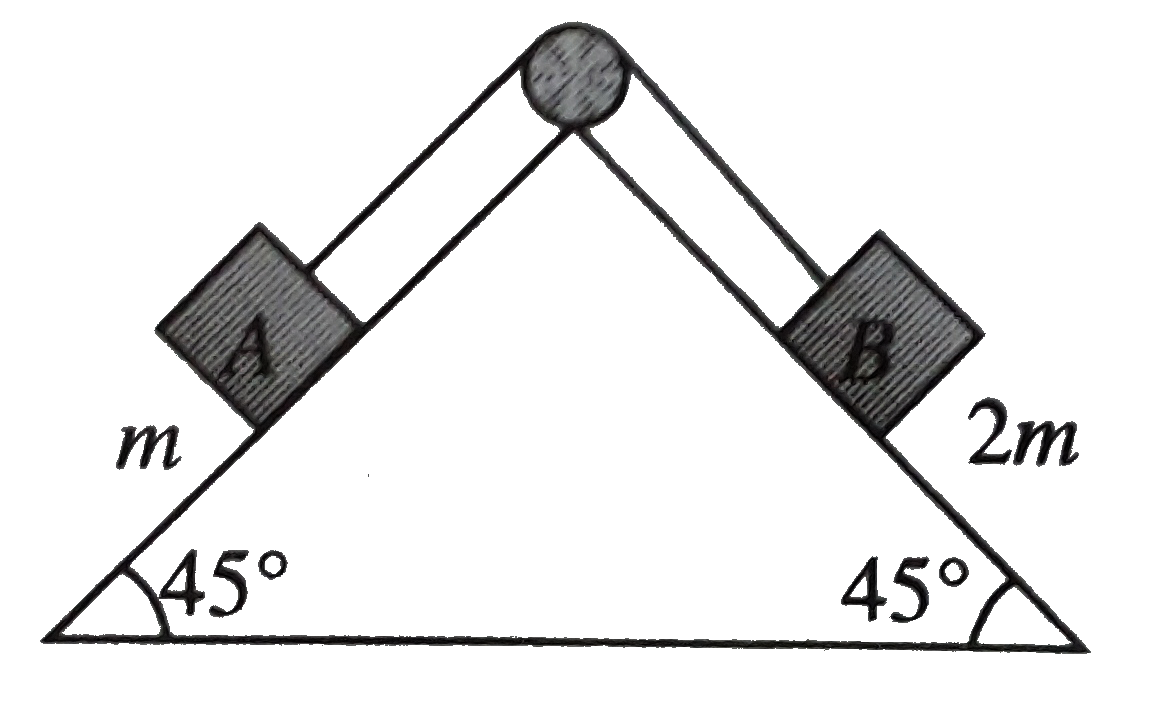
The acceleration of A isView SolutionBlock A of mass m and block B of mass 2m are placed on a fixed traingular wedge by means of a massless inextensible string and a frictionless pulley as shown in figure The wedge is inclined at 45∘to the horizontal on both sides .The coefficient of friction between blocks A and the wedge is 2/3 and that between block B and is released from rest find the following

The acceleration of A isView SolutionBlock A of mass m and block B of mass 2m are placed on a fixed traingular wedge by means of a massless inextensible string and a frictionless pulley as shown in figure The wedge is inclined at 45∘to the horizontal on both sides .The coefficient of friction between blocks A and the wedge is 2/3 and that between block B and is released from rest find the following
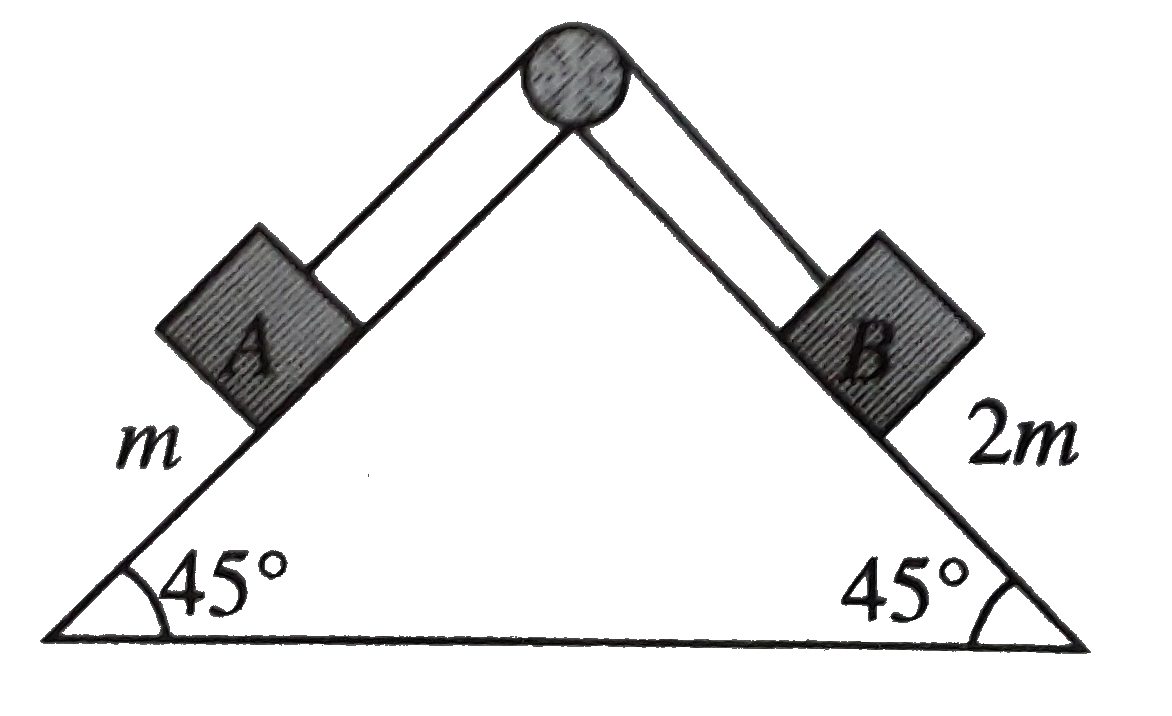
The tension in the string isView Solution

